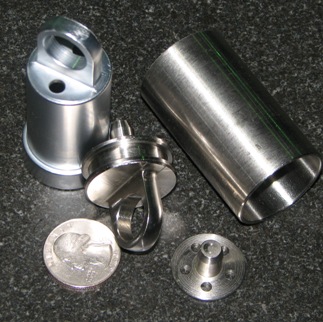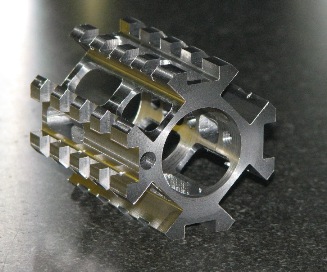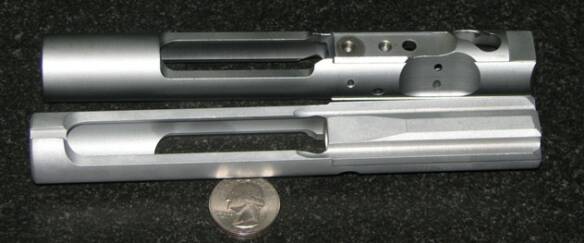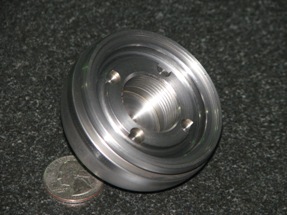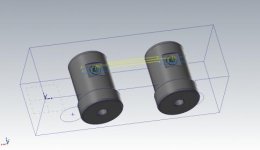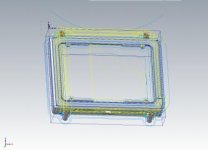Greetings,
I'm with most of the crowd here; you *must* be able to sight read the Gcode.
You don't need to be able to write it, necessarily, but you *must* be able to error check for bad retract heights, and things like that.
Because none of us have ever slipped up when defining a part in a CAM package. That never happens.
As someone upstream said, it's the difference between a 10 second fix and $10,000 worth of new spindle.
Being able to do minor tweaks to the G-code also makes it easy to tweak settings on the machine, without needing to go all the way back to the CAM station and reposting.
It also lets you clean up the code. Most CAM packages output spaghetti code. It's 'belt, suspenders, duct tape and staples' to make *sure* the machine goes where they want it to. I got one program for repeated drill holes from about 3,000 lines, down to about 150, just by clearing out the redundant crap. Which increased both load speed, as well as machine speed, and legibility for later reprogramming.
And our CAM package routinely fubars the tap cycles. Which doesn't bug me because I can fix them by hand faster and more dependably than I can fix them in the CAM package.
I use the CAM package for getting the numbers right, but then I go back and clean up the code to make the thing work better.
We also have a 7 axis Swiss. That's 100% Pencil cam. Because you're playing dodgeball with your tools all the time, and trying to model all the tools and tool locations would just be nuts. Especially for the sorts of non-standard tooling that happens on Swisses. Also because the CAM packages are so conservative about their moves, they spend a lot of time just moving to 'safe' positions. On a 10,000 part run, every second I shave out is 2.75 hours less at the end of the run. I can normally shave 20-30 seconds out of the programs without half trying. That's *days* of run time, just by way of me knowing how far back is 'safe' for this particular setup, instead of taking both spindles all the way to Z=0 every time.
So yeah, you have to know G-Code, at least enough to see problems. More is better, but basic "what's it gonna do next? and does that make sense?" familiarity is definitely required.
Regards,
Brian
I'm with most of the crowd here; you *must* be able to sight read the Gcode.
You don't need to be able to write it, necessarily, but you *must* be able to error check for bad retract heights, and things like that.
Because none of us have ever slipped up when defining a part in a CAM package. That never happens.
As someone upstream said, it's the difference between a 10 second fix and $10,000 worth of new spindle.
Being able to do minor tweaks to the G-code also makes it easy to tweak settings on the machine, without needing to go all the way back to the CAM station and reposting.
It also lets you clean up the code. Most CAM packages output spaghetti code. It's 'belt, suspenders, duct tape and staples' to make *sure* the machine goes where they want it to. I got one program for repeated drill holes from about 3,000 lines, down to about 150, just by clearing out the redundant crap. Which increased both load speed, as well as machine speed, and legibility for later reprogramming.
And our CAM package routinely fubars the tap cycles. Which doesn't bug me because I can fix them by hand faster and more dependably than I can fix them in the CAM package.
I use the CAM package for getting the numbers right, but then I go back and clean up the code to make the thing work better.
We also have a 7 axis Swiss. That's 100% Pencil cam. Because you're playing dodgeball with your tools all the time, and trying to model all the tools and tool locations would just be nuts. Especially for the sorts of non-standard tooling that happens on Swisses. Also because the CAM packages are so conservative about their moves, they spend a lot of time just moving to 'safe' positions. On a 10,000 part run, every second I shave out is 2.75 hours less at the end of the run. I can normally shave 20-30 seconds out of the programs without half trying. That's *days* of run time, just by way of me knowing how far back is 'safe' for this particular setup, instead of taking both spindles all the way to Z=0 every time.
So yeah, you have to know G-Code, at least enough to see problems. More is better, but basic "what's it gonna do next? and does that make sense?" familiarity is definitely required.
Regards,
Brian



